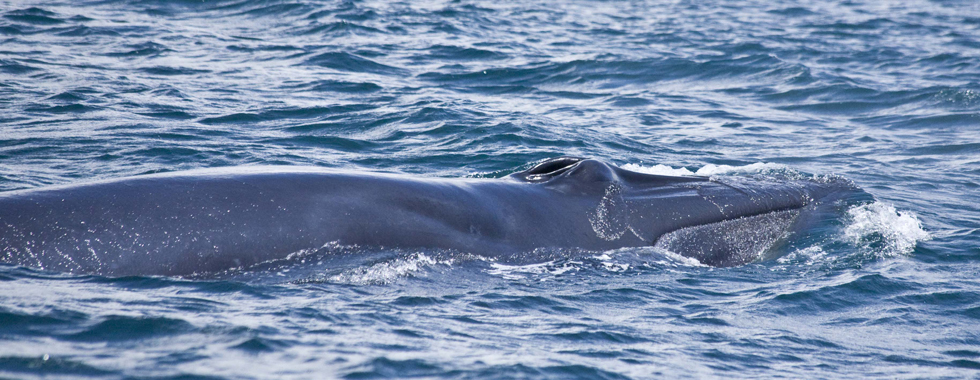Sunday Times 2
Eden: New whale in Lankan waters
A Sri Lankan researcher has identified what he believes is a new form of whale in the country’s waters.
Howard Martenstyn, a well-known marine mammals expert, says further study is required into the discovery of what he calls the “Eden’s whale” or “small form of Bryde’s whale”.

The head of a Eden’s whale
“To fully comprehend and confirm the identity of our new finding, a myriad of complex details need to be studied and absorbed,” Mr. Martenstyn cautions, in a paper made available to the Sunday Times. Whale identification, he affirms, is no simple task. In the water, most whales appear similar.
But Mr. Martenstyn describes dissimilarities and specific details of the new whale to illustrate how it differs from others. He anticipates that his information will make future whale identifications possible.
The “Bryde’s whale complex”, as it is named, comprises two types of Baleen whales. One is the Bryde’s whale, a large form that occurs in warm, temperate and tropical waters of the Indian, Pacific and Atlantic oceans. The other is the Eden’s whale- a “small form” that may be restricted to the Indo-Pacific.
“Sightings of Eden’s whale have recently been confirmed in Kalpitiya and Trincomalee,” reveals the paper by Mr Martenstyn, who is Director Research at the Centre for Research on Indian Ocean Marine Mammals (CRIOMM).

Bryde's whale
In the past, this species has likely been recorded as a minke whale and even a fin whale. But based on anecdotal evidence from distribution data, there is no reason why the Eden’s whale should not be present all around Sri Lanka, he says.
“At present, the depth distribution has been recorded at 200-300m (near continental ledge) while cruising,” Mr. Martenstyn elaborates. “There may to be a peak in sightings from March to April during the first inter-monsoon. Further research is underway to better quantify its seasonality, geographic and depth distribution, and abundance in Sri Lankan waters.”
The CRIOMM is continuing to collate and analyse sighting distribution records. The nomenclature Eden’s whale is provisional until further scientific work and classification is published, Mr. Martenstyn told the Sunday Times. “Nevertheless, it is a new whale and we need to start recording as such,” he stressed. “It’s difficult to identify at sea unless you know what to look for.”
Mr. Martenstyn has described features of the new whale on his website www.slam.lk. For instance, the Eden whale’s head is smaller and more V-shaped when compared with the Bryde’s whale. Its dorsal fin is taller, more pointed at the tip and curved, particularly the rear edge. While cruising, its body is mostly horizontal and it surfaces around every minute to take a breath. They are inquisitive and may suddenly appear beside boats.
The Eden’s whale is happy to swim alongside a vehicle, even turning sideways to have a better look. They may approach a vessel with its engine off. Mr. Martestyn says they are difficult to identify. “If it weren’t so, somebody would have identified this whale by now,” he pointed out.

